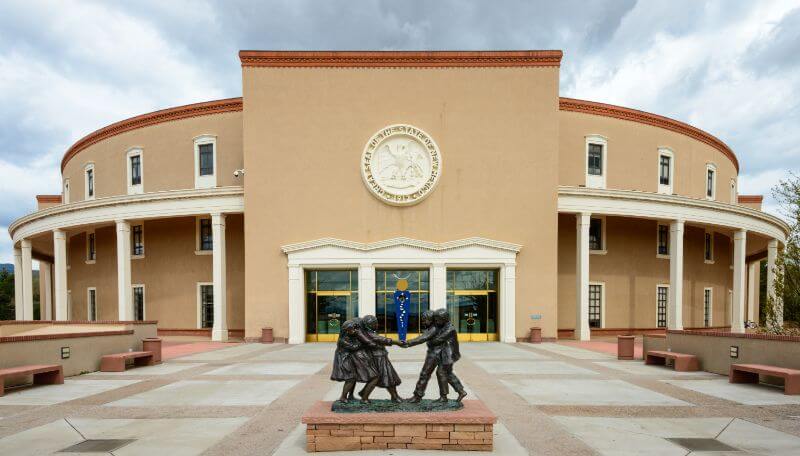Many US states, including New Mexico, are suffering from improper payments made by the unemployment insurance program to ineligible individuals. The total of these payments incurred by the government came to about $4 billion in 2014, or approximately 12% of the total unemployment insurance distributed to the beneficiaries. This is mainly caused by the errors made by the unemployed when filling out the paperwork they submit to qualify for the benefits or their lack of understanding of the eligibility requirements. Improper payments arising from impersonation or other illegal activities accounted for less than 5% of the total cost. The government has resorted to the "pay and chase" approach that requires paying benefits to claimants and then checking if payments were properly made. This approach led to criminal charges being filed against around 80% of innocent beneficiaries.
As the problem intensified, other approaches had to be adopted to address it. Indeed, the State of New Mexico implemented a new approach in 2015 in collaboration with the consulting firm Deloitte and the New Mexico Department of Workforce Solutions (DWS). The initiative nudges the beneficiaries using design thinking, data, and predictive analytics in the unemployment insurance plan. This approach employs data and behavioral sciences to gently nudge individuals to stay honest, act responsibly, and refrain from fraudulent activities, in addition to motivating people to look for jobs, thus reducing unnecessary payments and alleviating the workload of overburdened staff.
Many US states, including New Mexico, are suffering from improper payments made by the unemployment insurance program to ineligible individuals. The total of these payments incurred by the government came to about $4 billion in 2014, or approximately 12% of the total unemployment insurance distributed to the beneficiaries. This is mainly caused by the errors made by the unemployed when filling out the paperwork they submit to qualify for the benefits or their lack of understanding of the eligibility requirements. Improper payments arising from impersonation or other illegal activities accounted for less than 5% of the total cost. The government has resorted to the "pay and chase" approach that requires paying benefits to claimants and then checking if payments were properly made. This approach led to criminal charges being filed against around 80% of innocent beneficiaries.
As the problem intensified, other approaches had to be adopted to address it. Indeed, the State of New Mexico implemented a new approach in 2015 in collaboration with the consulting firm Deloitte and the New Mexico Department of Workforce Solutions (DWS). The initiative nudges the beneficiaries using design thinking, data, and predictive analytics in the unemployment insurance plan. This approach employs data and behavioral sciences to gently nudge individuals to stay honest, act responsibly, and refrain from fraudulent activities, in addition to motivating people to look for jobs, thus reducing unnecessary payments and alleviating the workload of overburdened staff.
The approach is based on a number of steps that should be followed, starting with filling out an online application to determine the applicant's eligibility to receive benefits. The online form includes several questions that tackle the reason for applying to the program and why the applicant is looking for a job. This step enabled New Mexico to avoid an average of 8 weeks of unnecessary payments. To encourage individuals to submit correct information, claimants receive a nudge informing them that the relevant entity will contact their former employer to verify that the submitted information is correct.
The next step starts after the verification process is completed. Claimants log in to the system every week to disclose their personal income to certify the submitted information and explain the actions they have taken to find a job. In case the applicant failed to report their income, the application is labeled as fraudulent. To ensure that it is not exposed to any fraudulent or misleading activities, the State of New Mexico is using behavioral nudges, which consist of a pop-up message on the phone's screen, as well as a personal attestation in simple and clear wording. For example, a text may be as follows: "In case you have worked and earned money during the period from 24/2/2013 to 2/3/2013, kindly disclose the amount you have earned." These nudges have reduced the fraud rate by 50%.
In the final step, claimants are required to report the progress made in their job search to receive a benefit. In this regard, the State of New Mexico requires claimants to make a minimum of two work search contacts every week. These activities include dropping off resumes, going to an interview, or attending training sessions. Thanks to this step, the government has saved 15% of unemployment insurance payments.

The initiative has resulted in tangible achievements. The year 2016 saw a 50% decrease in overpayments, while non-refundable payments decreased by 75%, which meant that $7 million were saved from the annual costs. While implementing the improper payment prevention initiative, the State of New Mexico was inspired by the research of the UK's Behavioral Insights Team (BIT), which applied concepts from behavioral economics. Following the resounding success of New Mexico's improper payment prevention initiative, municipalities of 37 other cities, including Tennessee, Kentucky, Missouri, Kansas and Oklahoma, collaborated with the Behavioral Insights Team to conduct 99 behavioral experiments as part of the What Works Cities initiative.
The approach is based on a number of steps that should be followed, starting with filling out an online application to determine the applicant's eligibility to receive benefits. The online form includes several questions that tackle the reason for applying to the program and why the applicant is looking for a job. This step enabled New Mexico to avoid an average of 8 weeks of unnecessary payments. To encourage individuals to submit correct information, claimants receive a nudge informing them that the relevant entity will contact their former employer to verify that the submitted information is correct.
The next step starts after the verification process is completed. Claimants log in to the system every week to disclose their personal income to certify the submitted information and explain the actions they have taken to find a job. In case the applicant failed to report their income, the application is labeled as fraudulent. To ensure that it is not exposed to any fraudulent or misleading activities, the State of New Mexico is using behavioral nudges, which consist of a pop-up message on the phone's screen, as well as a personal attestation in simple and clear wording. For example, a text may be as follows: "In case you have worked and earned money during the period from 24/2/2013 to 2/3/2013, kindly disclose the amount you have earned." These nudges have reduced the fraud rate by 50%.
In the final step, claimants are required to report the progress made in their job search to receive a benefit. In this regard, the State of New Mexico requires claimants to make a minimum of two work search contacts every week. These activities include dropping off resumes, going to an interview, or attending training sessions. Thanks to this step, the government has saved 15% of unemployment insurance payments.
The initiative has resulted in tangible achievements. The year 2016 saw a 50% decrease in overpayments, while non-refundable payments decreased by 75%, which meant that $7 million were saved from the annual costs. While implementing the improper payment prevention initiative, the State of New Mexico was inspired by the research of the UK's Behavioral Insights Team (BIT), which applied concepts from behavioral economics. Following the resounding success of New Mexico's improper payment prevention initiative, municipalities of 37 other cities, including Tennessee, Kentucky, Missouri, Kansas and Oklahoma, collaborated with the Behavioral Insights Team to conduct 99 behavioral experiments as part of the What Works Cities initiative.






